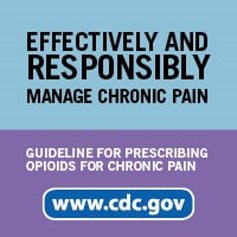The CDC on Ethical Prescribing—How We are Going to Lower the Overprescribing of Opioid Drugs

According to the Centers for Disease Control (CDC) and Prevention, more than eleven million, five-hundred thousand people misused opioid prescription pain reliever medications in 2016. Let’s look at that again. More than eleven million people used pain meds either without a prescription, or they used their own meds in a way that was not recommended by their doctor.
Eleven million people comes out to about three percent of the total U.S. population, more if you only consider the American population that is over the age of eighteen. In fact, just to be clear, about five percent of Americans over the age of eighteen misused opioid pain relievers in 2016. Even more did so in 2017, and more will do so in 2018.
What’s being done about this? The Centers for Disease Control and Prevention started talking about “prescribing guidelines” and “ethical prescribing habits” a few years back. The CDC was concerned that not only were there far too many opioid pills floating around U.S. pharmacies and medical centers for the relative amount of pain that was being addressed in America, but the CDC also felt that doctors were prescribing these drugs far too liberally.
And so the CDC drafted their own “Prescribing Guidelines” and sent them to American doctors everywhere. Whether the doctors follow the guidelines, however, is entirely up to them. But the guidelines were and are highly valuable, touching on the need for ethics, morality, common sense, and a great deal of good judgment on the part of anyone in the U.S. who has the ability to write a prescription for opioid drugs.
The CDC’s Prescribing Guidelines

The CDC’s mission statement states that their “Guideline for Prescribing Opioids for Chronic Pain” is intended primarily to improve communication between health providers and patients.
The goal is to get doctors and patients talking about the risks of opioid pain relievers and to no longer push these drugs as being “miracle cures” for pain symptoms. The mission statement goes on to talk about the importance of improving the safety and effectiveness of pain treatment, about reducing the risks of opioid misuse, abuse, addiction, and overdose.
The guide also discusses the two, primary areas in opioid prescribing that need to change the most. These are how much opioid pain relief is prescribed and for how long. These are the areas in which doctors make the most errors.
In their guide, the CDC talks about how non-pharmacological and non-opioid based treatments for pain are highly preferred over opioids. The CDC discusses how providers should always make efforts towards non-opioid based treatments before they even consider opioid treatments. This has been an area that could use some significant improvement, as many patients are able to get a prescription for high-strength painkillers after just one visit with their doctor.
The CDC also discussed the need for patients to use only immediate-release opioid pain reliever drugs, instead of extended-release and long-acting drugs. Rather than putting patients on pain regimens where they are essentially chronically doped up on painkillers (the effects of extended-release varieties), medical practitioners should instead focus on only having their patients take short, immediate-release painkillers when they absolutely need them.
Reduce How Often Drugs are Prescribed

In their guidelines, one area of the CDC's concern was how often these pills were being prescribed. These drugs are simply overused. Most Americans seek pain relief for back pain, something that can usually be addressed with a cold or hot pack, some herbs, supplements, perhaps some chiropractic care, a massage, physical exercise or therapy, or even acupuncture, and maybe an over-the-counter, non-opioid pain reliever.
The simple truth of it is that medical practitioners are prescribing high-strength pain relievers when it is clear that less invasive, less intensive methods would be more than sufficient. The CDC urged medical experts everywhere to start switching to alternative forms of pain relief, over-the-counter pain relief, and physical processes such as chiropractic and massage therapy to address pain.
Reduce How Long Drugs are Prescribed For
Another area that draws quite a bit of concern is the duration of time that most painkillers are prescribed for. What should only be a week’s supply of a painkillers ends up being a prescription for an entire month’s worth of pain meds. This is entirely unnecessary, dangerous, and unethical.
According to the CDC’s publication, “Three days or less will often be sufficient; more than seven days will rarely be needed.” That is for acute pain. And for chronic pain, they say that “Clinicians should evaluate benefits and harms with patients within 1 to 4 weeks of starting opioid therapy for chronic pain.” But in actual practice, most clinicians prescribe the first dose of painkillers for one month or more, regardless of whether or not they are for chronic pain or acute pain.
As the CDC has pointed out, Physicians need to cut down on the duration of their prescriptions. They should prescribe painkillers for only three days to one week, and they must insist that their patients come to see them again for a transfer to non-pharmacological pain relief once the brunt of the pain has been dealt with from the initial prescription.
What Does Ethical Prescribing Mean?

Having discussed the keynotes of the prescribing guide, now we need to look at the overall message of the guide itself. In their guide, the CDC discusses the concept of ethical prescribing. This is an interesting topic, and a controversial one too. But it is one that the CDC feels very strongly about. In fact, the CDC is currently drafting a book on ethics and how it applies to public health.
The underlying concept in everything the CDC is saying about ethical prescribing is that doctors, dentists, and anyone else who might have the authority to prescribe opioids must become highly ethical about it. The truth is, ethics has become something of a lost art among many medical experts; they proceed far too much from what pharmaceutical sales reps tell them, and not enough from what the patients in front of them actually need.
And we can all take a page out of the CDC’s book. (And maybe we will do just that when they publish their book on this subject!) But for the time being, all of us, patients and doctors alike, need to crack down the overprescription of opioids, a trend that has brought the opioid epidemic down upon us.
Change starts with each one of us making an effort in the right direction. That “right direction” includes less opioid prescribing, prescribing opioids for shorter durations when they are needed, using lower-strength and immediate-release opioids instead of high-strength, extended-release varieties, and ultimately, doing our best to utilize non-pharmacological solutions to pain symptoms.
Sources:
- https://www.census.gov/prod/cen2010/briefs/c2010br-03.pdf
- https://www.cdc.gov/drugoverdose/pdf/Guidelines_Factsheet-a.pdf
- https://www.cdc.gov/od/science/integrity/phethics/trainingmaterials.htm
- https://www.cdc.gov/drugoverdose/prescribing/guideline.html


 ®
®